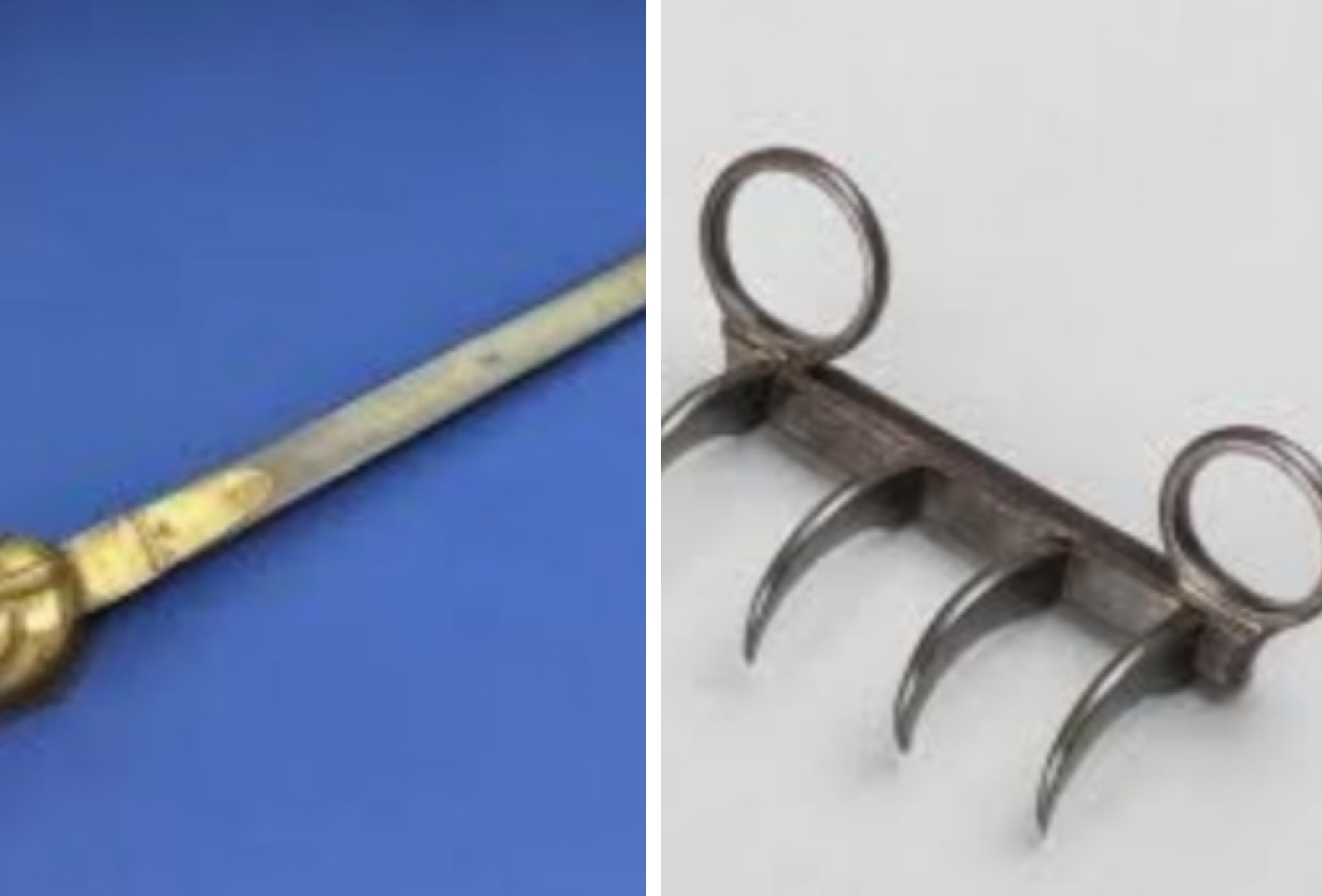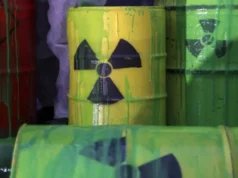Of Wagh Nakh & Dandpatta: Maharashtra’s Lead in Heritage Conservation
“Preserving the heritage, promoting the future” —Becky Williamson Mart

Post by Col Satish Singh Lalotra
Year upon year, the importance of heritage and its conservation is not lost upon the masses of this planet of ours. Rather to reinforce the idea of heritage conservation as also to take it out from the closets of intellectual deliberations the month of April (18th April) has been earmarked as the ‘World heritage day’ since long. The day is observed to spread awareness about preservation of human heritage. It came into its being when UNESCO approved April 18 as ‘World heritage day’ to make people aware of the dying cultures of nation states. On this day people from all walks of life do different types of activities including visiting monuments and heritage sites, conferences, seminars etc.
Heritage conservation as a whole is a very dedicated, painstaking and costly undertaking that has a bevy of experts in their domain of conservation, the local governing body as also a liberal executive that pulls out all stops in funding these conservation efforts. A humongous undertaking hinging on the anvil of expert’s opinions, a liberal dosage of funds has to make do with local efforts of popularizing such efforts without which it refuses to take off on its own steam. A similar sort of ecosystem encompassing the above mentioned facets in the western state of Maharashtra has been doing rounds that has now crystallized into hardboiled ‘Heritage symbols’ in the form of world famous ‘WaghNakh’( tiger claws) which were used by the Deccan warrior King Chhatrapati Shivaji Maharaj to wrench out the bowels of his bête noire ‘Afzal Khan’ the famous General of ‘Adil shahi’ dynasty of Bijapur sultanate on 20th November 1659 at the forecourt of ‘Pratapgad’ fort at a truce meeting.
This ‘Wagh Nakh’ (tiger’s claws) is a fist loading, claw like dagger designed to fit over the knuckles of a hand. It can be concealed under and against the palm and comprises 4 curved blades fixed to a crossbar or glove. It is designed to slash through the opponent’s skin and muscle when wielded in an offensive manner. According to Inderjeet Sawant, a history researcher in Kolahpur says that this miniature, offensive but lethal weapon was in possession of the descendants of Shivaji Maharaj in the Satara court. The priceless heritage item was given by the fifth and final Chhatrapati Pratapsinh Maharaj to one Mr. James Grant Duff an East India Company officer who was appointed resident (political agent) of Satara state in the year 1818 under very intriguing circumstances.
Duff served in the court from 1818 till 1824, after which he took Wagh Nakh surreptitiously to England whereupon his descendants donated the weapon to the (V&A) ‘Victoria & Albert museum, London. Duff himself was an amateur historian writing the influential treatise ‘A history of the Mahrattas’ (1826), a three volume work that is cited till date. In fact Duff got a water tight case made up for the retention of this intrepid weapon in Scotland. The case has the following inscription upon it—‘The Wagnuck’ of Sivajee with which he killed the Moghul general’. The last Peshwa (prime minister) of the Marathas, Baji Rao –II surrendered to the British in June 1818 after defeat in the third Anglo –Maratha war. He was banished to the jungles of ‘Bithoor’ near Kanpur. It is understood and may be possible that after this resounding defeat, an iconic war item like the ‘Wagh Nakh’ was made part of war indemnity between the victors and the vanquished. But no such written word appears in any of the authentic and official records of this development.
The iconic weapon would be brought back to India before 06TH June this year as per the cultural affairs minister of Maharashtra ‘Sudhir Mungantiwar’. Initially Wagh Nakh was supposed to be brought to India last year but the plan got shifted to April this year which may again see a slight amount of reshuffling of date and time owing to the setting in of the model code of conduct because of Lok Sabha elections in the country. The tryst with 06th of June is important which is Chhatrapati Shivaji Maharaj’s Rajyabhisek day. Shivaji Maharaj was crowned as the king on 06th June 1674 which marked the beginning of ‘Hindavi Swarajya’. The Waghnakh will be kept in Maharashtra for three years as per MOU signed with V&A Museum in London. It will first arrive in Mumbai and later kept in four government museums viz Mumbai, Satara, Kolhapur, and Nagpur amid heavy security.
Virtual screens have been planned alongside, which will display the story connected with the weapon for the benefit of the visitors and the school students. As per the cultural affairs minister, the story of this weapon would explain how Shivaji Maharaj had used this Wagh Nakh for victory. A district level committee has been formed to oversee the exhibitions that will feature all the relevant details of this iconic weapon to the masses. Maharashtra government has spent more than Rupees 50 lakhs for its 3 member key team’s six day visit from 29th September to 04th of October last year to V&A museum in London. The origins of Wagh Nakh have its traces in ‘Dhanurveda’ a vast subject, dedicated to the field of weaponry, combat and military science at large.
Waghnakh is an ‘Amuktshastra’ according to the Agni purana, an ancient guide text referring to forging od weapons in the Martha empire. Amuktsashtra literally means a weapon that can be worn as a part of the body. Next on the radar of the state government is to bring back the iconic ‘Jagdamba sword’ wielded by the Maratha warrior king.
As if this was not enough , the cultural affairs minister of Maharashtra recently stated that on the occasion of 350th anniversary of the coronation of the warrior Maratha king, the ‘Dandpatta’ ( gauntlet weapon) will be declared as a ‘State weapon” thus according it a state cum regal status after so many centuries of utter neglect. The Dandpatta is a sword with a gauntlet integrated as a hand guard and commonly called as gauntlet –sword. It has a special place in the Maratha weapon history and was a distinctive weapon of the Maratha army. For this purpose this weapon will be declared as a state weapon, thus catapulting the state of Maharashtra first in the country to announce this weapon as a ‘state weapon’.
Few days back the CM Eknath Shinde gave approval for declaring the Dandpatta as a state weapon at the ‘Shivaji Jayanti’ celebrations in the Agra fort. It is said that Mughal durbar once experienced the self-respect and majesty of the warrior king and centuries later the same durbar will be resounding with the cries of ‘Shiva Raya’. Russian historians have also elaborated the importance of this Maratha weapon in their books written about the warrior king.
As per the literature available in the ‘Dhanur Veda’ this sword was very light weight , easy to handle , carry and also concealed within the body armour of a soldier thus proving very elusive in is very being. It was very useful in multiple fights engaging the enemy from close quarters. Like the famous ‘Waghnakh’ this too could be worn on the fist .It had distinctive straight blade, attached to an armoured gauntlet supposed to be worn on the fist to the elbow. Created in the mediaeval Maratha era this Dandpatta has seen many a victories of Maratha Empire solely on the basis of its getting wielded by a skillful infantry man of Maratha army.
Though India has crafted the so called Heritage Conservation and Preservation Act, 2010 ( act no XV of 2010) respectively of historic or cultural or religious cum aesthetic significance and for matters connected therewith or incidental thereto ; does it take so many years to call the bluff of our colonial masters as also our own perfidy to claim our true heritage? Or is it sheer apathy on the part of the country that despite more than 75 years of independence we have been not able to make a proper case study of our looted heritage items by the colonial powers that adorn museums like V&A of London and ship them back to India? Why only a MOU for 3 years between the Maharashtra government and V&A Museum for safekeeping of Wagh Nakh in India for that limited period? Why not go the whole hog and keep the item for posterity? These are some of the questions that a discerning reader ought to mull upon. But as is said— ‘Preserving the heritage, promoting the future’ ought to be our motto if anything of substantial nature is supposed to be done in this regard.
(The Author is a retired army officer and is a regular scribe of RK. He can be approached on his email: slalotra4729@gmail.com)



